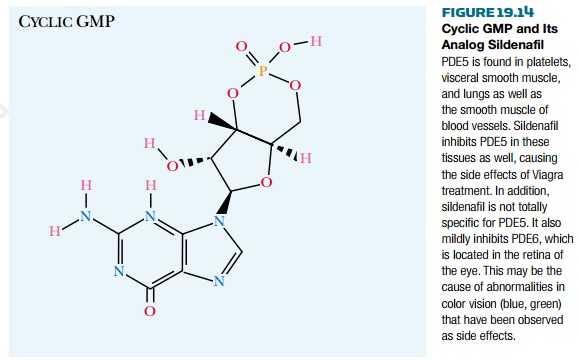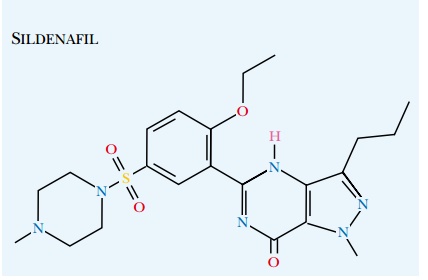Chapter: Biotechnology Applying the Genetic Revolution: Noninfectious Diseases
Cyclic Phosphodiesterase and Erectile Dysfunction
CYCLIC
PHOSPHODIESTERASE AND ERECTILE DYSFUNCTION
The cyclic nucleotides are inactivated
by the enzyme cyclic phosphodiesterase that converts them to the corresponding
5′-nucleoside monophosphates (5′-AMP or 5′-GMP). At least 10 phosphodiesterase
isoenzymes are found in humans. They are distributed in different tissues, and some
are specific for cAMP, some for cGMP (PDE5, PDE6, and PDE9), and others work on
both.
Inhibition of phosphodiesterase 5 (PDE5)
, which is specific for cyclic GMP, keeps cyclic GMP levels up and so keeps
blood vessels dilated for longer. This is the basis of the treatment of male
erectile dysfunction by the drug Viagra (sildenafil; Fig. 19.14 ), an inhibitor
of PDE5. An estimated 20 to 30 million American men suffer from some degree of
sexual dysfunction, and perhaps half are estimated to benefit from Viagra
treatment.


More recently two new PDE5 inhibitors
vardenafil (Levitra) and tadalafil (Cialis) have come to market. These act in a
very similar manner to sildenafil but are somewhat more potent. Moreover,
tadalafil has a prolonged half-life. Consequently, whereas the duration of
action of sildenafil and vardenafil is about 4 hours, that of tadalafil is
about 36 hours.
Related Topics